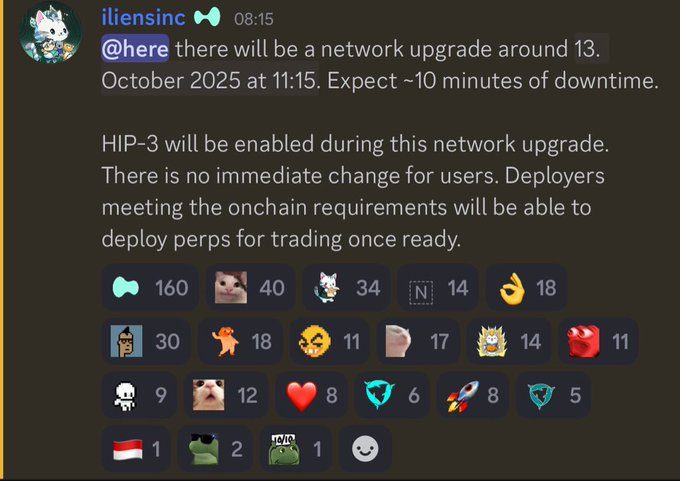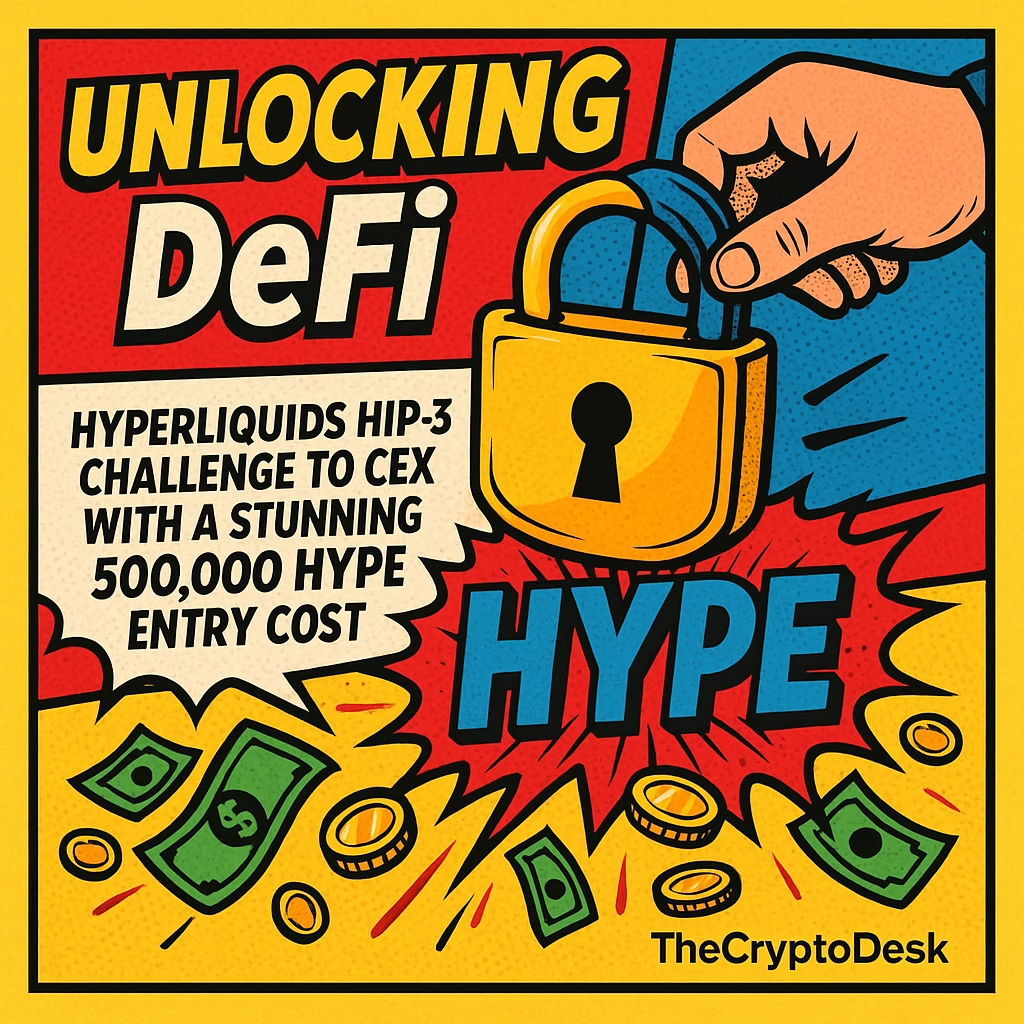In a bold move that blurs the lines between developers and traditional centralized exchanges, Hyperliquid has recently flipped the script in decentralized finance (DeFi) with its new HIP-3 network upgrade. Spearheading a significant transformation, this upgrade went live on October 13, 2025, at 9:15 a.m. UTC, unlocking unprecedented opportunities for developers to create their own perpetual decentralized exchanges (perp DEXs) without facing the daunting barriers of centralized gatekeeping.
 *A snapshot of the Hyperliquid network’s UI showcases its new features.*
*A snapshot of the Hyperliquid network’s UI showcases its new features.*
With HIP-3, developers can dive right in by staking 500,000 HYPE tokens. This is more than just a financial commitment; it serves as a dual-purpose bond that safeguards the platform against malicious activities. Once they have staked the required amount, these pioneers can design and deploy perpetual contract markets, with the freedom to supply their own liquidity, oracles, and front-end interfaces. In a dynamic twist, they stand to earn up to 50% of the trading fees generated from their own markets, laying the groundwork for a fresh wave of on-chain innovation.
What makes HIP-3 transformative is that it decentralizes the listing process, allowing builders to launch new perpetual markets—an opportunity previously reserved for a select few. A Hyperliquid administrator confirmed in Discord that while users may not notice immediate changes, the upgrade fully democratizes the ability to list these markets, signifying a seismic shift in power dynamics within DeFi.
The integration of HyperEVM means that HIP-3 isn’t just about enabling trading. It supports a robust set of features including smart contracts, governance protocols, and security mechanisms like validator slashing and open interest caps. This framework is designed to lower entry barriers for budding projects, enabling them to efficiently and safely test new market offerings.
Centralized exchanges (CEXs), long the dominant players in this space, are facing increasing scrutiny, especially as developers voice their frustrations over exorbitant listing fees. Prominent voices in the crypto community, like Base’s Jesse Pollak and developer Jeffy Yu, are vocal about the often opaque and costly nature of getting listed on these platforms. These fees range anywhere from 2% to as high as $1 million for placement on exchanges like Binance—an expense many regard as unfair and exploitative.
if you wanna know how we were being handled by these companies when building zerebro@binance asked for $1mil cash to list i honestly don’t even think @cz_binance knows his listing team is cabaling devs, esp since he was locked up stillthink we paid @krakenfx like $100-200k… https://t.co/36QaQiomPo
By comparison, HIP-3 presents a streamlined approach to market creation, allowing deployers to simply stake their HYPE tokens to kick off their trading venues. Another game-changing aspect is the HyperCore integration, facilitating high-performance order matching and sub-second trade finality, enabling a level of scalability and functionality that legacy systems simply can’t compete with.
Industry experts are buzzing about the implications of this upgrade. Akshay BD, a recognized commentator in the space, noted that for teams wanting to launch markets quickly, HIP-3 is a “big deal.” Developers can easily acquire HYPE, stake it, and leverage the infrastructure provided by Hyperliquid, alleviating the stress of starting from scratch or building a complicated tokenomics structure.
this is a big deal imo. teams can now buy 1M HYPE, stake it and spin up markets around hyperliquid and earn fees.they don’t need to worry about infra, launching a token, or aligning incentives between the network, app layer and users. everyone coordinates around a single asset.… https://t.co/GFC4pC3XEQ
The possibilities don’t stop at cryptocurrencies. HIP-3 could broaden Hyperliquid’s horizons, allowing for perpetual markets on various asset classes, including equities, commodities, and even prediction markets. Excitingly, several early-stage projects are already gearing up to deploy under this new umbrella, hinting at a future filled with diverse financial instruments.
The launch of HIP-3 coincides with a renewed tension between Hyperliquid and Binance, following allegations from Hyperliquid co-founder Jeff Yan about centralized exchanges underreporting liquidations during the recent market downturn. As Yan expressed on X, he believes that “underreported CEX liquidations” distort market transparency, a claim he supports with Hyperliquid’s own on-chain data system, which records all transactions for public viewing.
💥@cz_binance pushed back after Hyperliquid’s Jeff Yan @chameleon_jeff accused centralized exchanges like Binance of underreporting user liquidations during last week’s market chaos.#ChangpengZhao #Hyperliquid https://t.co/oHnrmm4g26
In response, Binance’s founder Changpeng Zhao (CZ) defended his platform, claiming Binance invested heavily to protect its users during the market turmoil, while emphasizing the differences in “value systems” across companies in the sector. The backdrop of this ongoing spat adds a layer of complexity to the dynamics between traditional and decentralized exchanges.
As Hyperliquid continues to establish itself as a groundbreaking player in decentralized trading, it now captures an impressive 70% of the total market for decentralized perpetuals according to data from DeFiLlama and Token Terminal. The introduction of HIP-3 is not just a technological upgrade; it represents a paradigm shift towards a more democratized trading ecosystem where innovation can flourish without the constraints of traditional finance.
In conclusion, the launch of HIP-3 by Hyperliquid isn’t merely a step forward; it’s a leap into a future where developers can create financial products suited to the needs of the community, without the prohibitive costs of centralized exchanges.
Want to stay updated on these developments? Follow us for more insights into the rapidly evolving world of cryptocurrency and decentralized finance.
